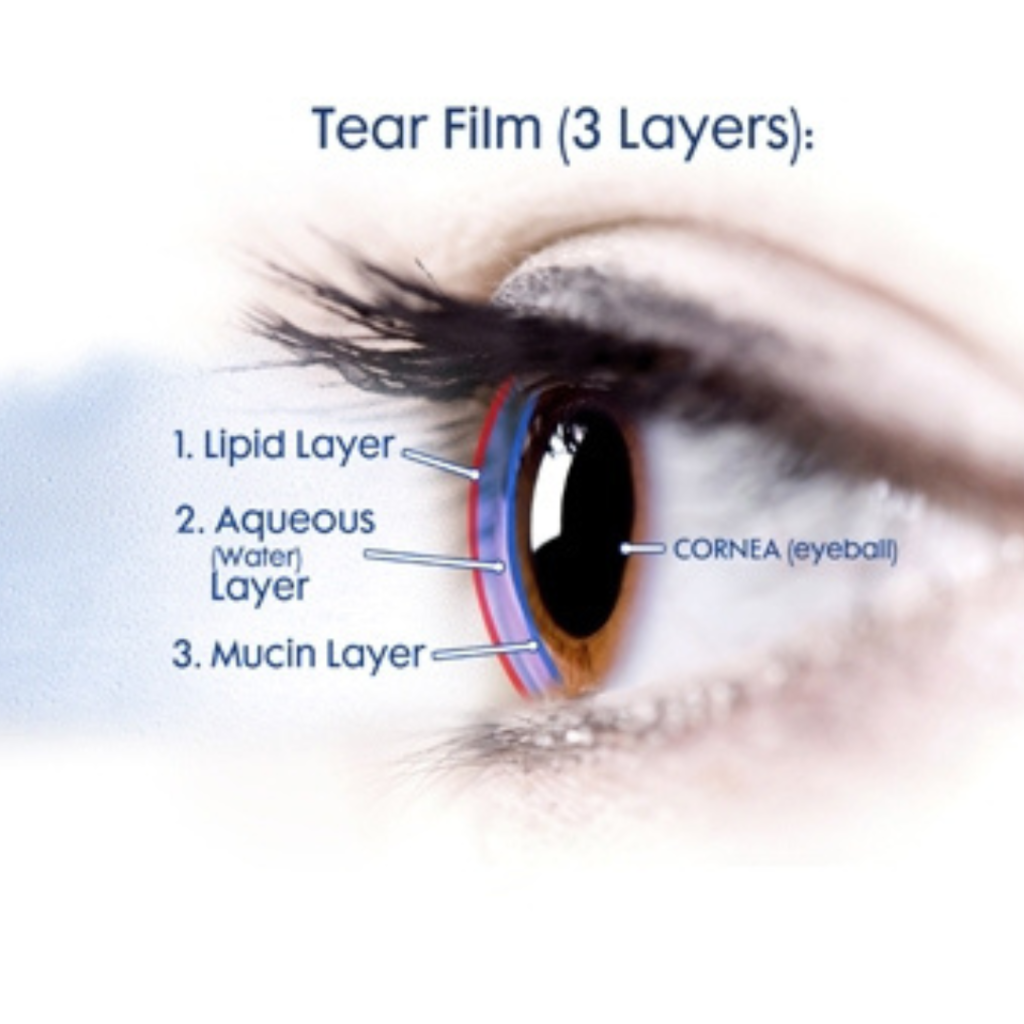Dry Eye Clinic Available at Alexander Bain and Murray Opticians
Dry Eye Clinic Available at Alexander Bain and Murray Opticians
Dry eye is a common condition that affects the amount of tears you produce or the quality of the tears you produce. It is most common in people over the age of 65 and more commonly affects women.
A healthy, good quality tear film is essential for clear, sharp vision. Tears keep the surface of your eyes wet and smooth. They help focus light so you can see clearly. They also protect your eyes from infections and from irritations like dirt or dust. When your eyes don’t make enough tears, or your tears don’t work the right way, you can get dry eye.

The Tear Film
A normal tear film is made up of three main layers, the outer lipid layer, the middle aqueous layer, and the inner mucin layer.
The outer lipid layer sits on the surface of the tear film and its primary function is to stop tears from evaporating from the surface of the eye. The meibomian glands produce the lipid to form this layer.
The middle aqueous layer forms the thickest part of the tears, it is produced by the lacrimal gland and is important to supply oxygen to the cornea.
The inner mucin layer helps to spread the tears and stabilise the tear film. This layer is produced by goblet cells. If any of these layers break down the tear film becomes imbalanced, and the quality or quantity of tears will be affected.
The main symptoms of dry eye are:
– Uncomfortable, gritty or itchy-feeling eyes
– Burning sensation
– Fluctuating changes to your vision (temporary blurring) which will improve when you blink
– Watery eyes

Blepharitis and Other Factors
Dry eye syndrome is often associated with other conditions such as blepharitis. Blepharitis is inflammation of your eyelids and can cause crusting at the base of your eyelashes or blockages in your meibomian glands. As mentioned previously, meibomian glands are important in forming the outer lipid layer of the tears and preventing tear evaporation.
Other factors that can influence dry eye are:

Other factors that can influence dry eye are:
- Hot, Windy or dry environments including air conditioning can cause evaporation of
tears from the ocular surface - Age – as we get older the glands that supply the layers of the tears become less efficient and our eyelids are not as good at spreading tears across the surface of our
eyes - Screen time – when looking at a screen we blinking significantly less that normal this
means that the tear film is not renewed as frequently and our eyes become dry - Hormonal changes – changes in oestrogen levels during menopause can cause dry eye
- Certain medical conditions such as diabetes and rheumatoid arthritis and certain
medications such as antihistamines - Dry eye is a chronic condition and it is likely that once you have it, you will have to continuously manage it.
Management Options
The main management options for dry eye are:
- Lubricants such as artificial tears or ointment
- Warm compresses and lid massage for blocked glands
- Lid cleaning and hygiene for blepharitis
- Dietary measures such as omega-3 oils and flax seed oil in your diet may help improve the tear film quality.
Here at ABM Opticians, we have a specialised Dry Eye Clinic where we can assess the type of dry eye you have and advise on the best management plan for you.



Getting your kids’ eyes tested over the summer holidays
Getting your kids' eyes tested over the summer holidays can be beneficial for several reasons:…

Understanding Dry Eyes: Causes, Symptoms, and Solutions
Understanding Dry Eyes: Causes, Symptoms, and Solutions Dry eyes are a common condition that affects…
